#Senso-temple
Text

Sunflare at Sensō-ji is temple Asakusa, Tokyo, Japan. @travelgraphics @visitheworld
#original photography#photographer on tumblr#sun flare#tree#building#shrine#temple#senso-ji#asakusa#tokyo#japan#religious#travel pictures#travel#photography
94 notes
·
View notes
Text
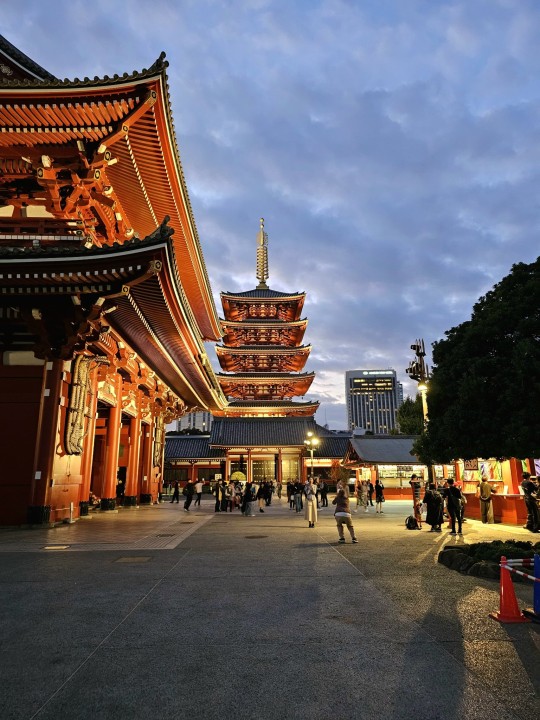
32 notes
·
View notes
Photo

Senso-Ji Temple, Asakusa, Tokyo
Tokyo Got Snow For The First Time In 4 Years
Photographer: Yuichi Yokota

Shibuya, Tokyo

Senso-Ji Temple, Asakusa, Tokyo

Senso-Ji Temple, Asakusa, Tokyo
23 notes
·
View notes
Text
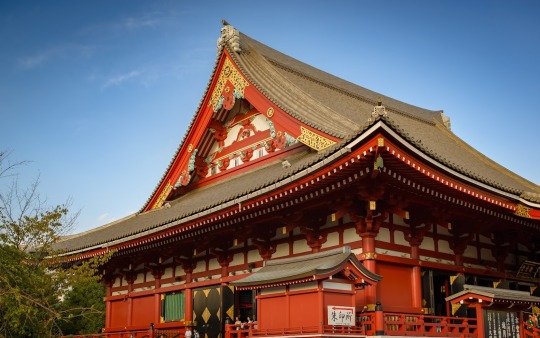


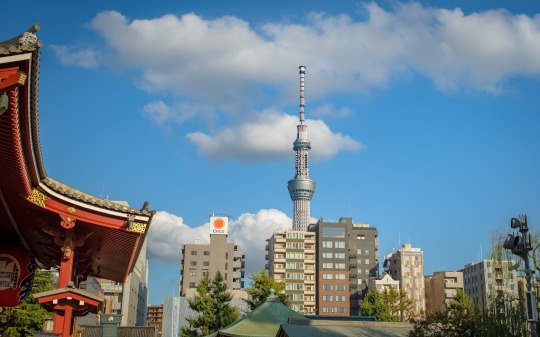
#fameone#asakusa#senso ji#temple#tokyo#japan#photography#photographers on tumblr#artists on tumblr#street photography#skytree
26 notes
·
View notes
Text

Sensō-ji Temple / Lycoris Recoil S1E5
2 notes
·
View notes
Text
Memoirs of a Blogger
After the rain-heavy day that was Tuesday, the 12th of March, the sun was quick to come out on Wednesday, the 13th. And what a glorious day it was! Bleachpanda and I enjoyed another breakfast of grilled cheese toasties at the bakery at our hotel before venturing to Shinjuku station in order to take the train to Skytree. Though we had to transfer once, the ride was fairly smooth and we arrived at Oshiage station shortly after 10 AM.
As we ascended up to the department store to the Skytree counter, I did get distracted by the Kirby cafe, the Pokemon Centre and a ton of other shops including Doraemon and a pop-up store for Poppy Playtime. Not that I play Poppy Playtime but I've definitely been exposed to some of the lore from watching Game Theory on YouTube (it still feels oh so very raw with Matthew Patrick leaving but I think Tom is a suitable replacement). In fact, there was also Poppy Playtime and other indie mascot horror game merchandise in South Korea too.


Once we secured our tickets to go up, bleachpanda and I waited for our allotted time to head up to the observation deck. Once there, it felt like all of Tokyo was laid out beneath our feet. But what was more amazing was the sight of Mount Fuji in the distance.
I'd originally planned to head out to Kawaguchiko to take some scenic shots of the infamous volcano but given how long it would take to get there, I was happy I could cross out seeing Mount Fuji right in the heart of Tokyo.
Still, I wouldn't be opposed to visiting Kawaguchiko or Hakone if I were to head to Japan again. There's something about being surrounded by nature and snapping a shot of an iconic landmark that calls to me. Of course, Mount Fuji is also known for being notoriously elusive even on good days because of cloud cover or fog. So, it was a rare sight indeed for me to glimpse it. Both at the normal observatory and also up high at the Tembo Galleria.
Heck, we even took a photo too! And got mini versions of the tower through the gacha machine. Mine would turn yellow, which, according to the various descriptions of the lighting for Tokyo Skytree is considered a sign of good luck, with its illumination emphasising liveliness.




To commemorate the event of sighting Mount Fuji from on high, bleachpanda and I enjoyed a parfait each at the Sky Tree cafe as we soaked in the sight. After all, we were here on holiday and we didn't have an intense itinerary to hit every stop. And honestly, it works out well. There isn't too much stress and we can go at our own pace to see what we want without feeling the pressure of missing out on something important.
It helped, too, that bleachpanda and I had already visited Japan in the past and felt that some of the sights didn't need another visit.
After we enjoyed our snack at 345 metres above sea level, we returned back down to Earth and tried some shrimp prawn broth ramen before heading to Asakusa.
Asakusa is a historic neighbourhood located in Tokyo and it's a popular tourist destination because of its unique blend of traditional and modern cultures. This was prevalent with the number of street-food stalls, traditional craft shops and rickshaws in the region. It also, more importantly, had areas to rent a kimono.
Since bleachpanda and I had the good fortune to rent a hanbok while we were in South Korea, I couldn't resist the idea of trying on a kimono while here and taking them out for a spin. I went with a tasteful purple kimono with a yellow/ gold obi while bleachpanda wore a multicoloured one with shades of blue, yellow and pink. Once attired, we headed down to Senso-ji temple, visiting the shops and stalls as we did so.
We even, to my surprise, had someone ask if they could take a photo with us. So, if you ever see two Asian ladies and a Latina woman in the heart of Asakusa on social media, it might be the two of us. Indeed, we later spotted the mother and son duo (the son took the photo) as we headed down Nakamise-dori street towards Senso-ji temple.
So, yes, here's ANOTHER photo of the back of my head:




Unfortunately, we weren't able to stay in our kimonos for long and after almost two hours, we had to return to the shop: Silk in order to return them before 5 PM. Afterwards, we were joined by my two Australian friends, who had just missed out on seeing me and bleachpanda rocking our kimonos (although I did send them photos). They were meant to be our professional photographers for the day but alas had got caught up in their own touristy itinerary they had meticulously planned to get the most out of their trip.
And after another wander around Senso-ji temple, the four of us went for dinner at a local restaurant. Full on Italian pizza and pasta, bleachpanda and I called it a night and returned to our hotel. My other two friends would be heading to Hakone the next day and be continuing on their Japan adventure as bleachpanda and mine's was drawing to a close.
Still, the morrow was full of promises to be just as action-packed. And after nearly three weeks overseas, bleachpanda and I would need to dig deep into our energy reserves to keep the momentum going before our inevitable return back home.
A fact which saddened me as I went to bed for the night.
Yokohama, here we come!


2 notes
·
View notes
Text
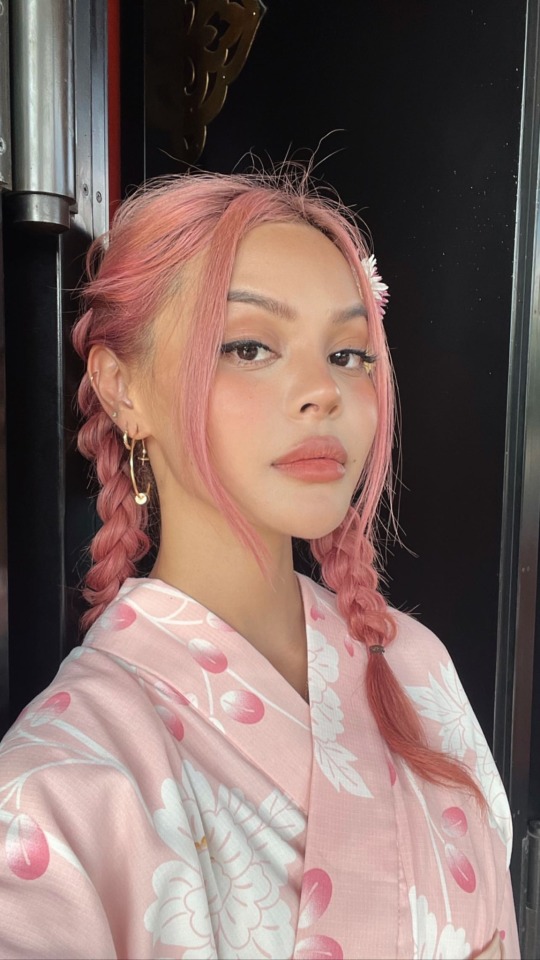
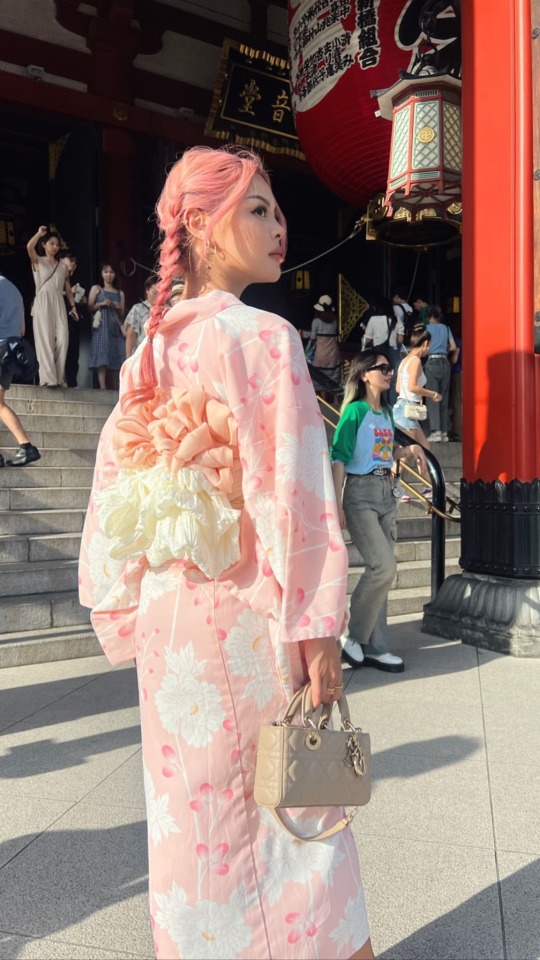
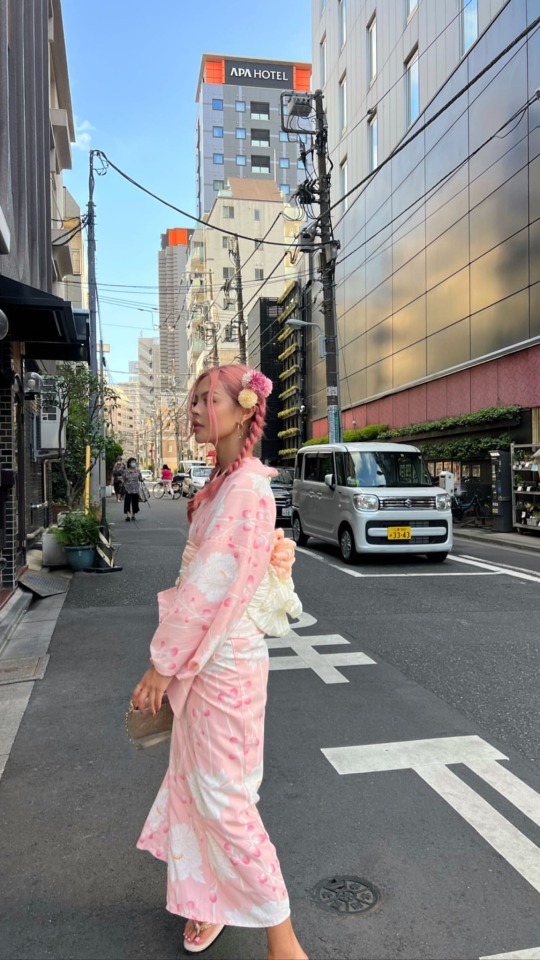
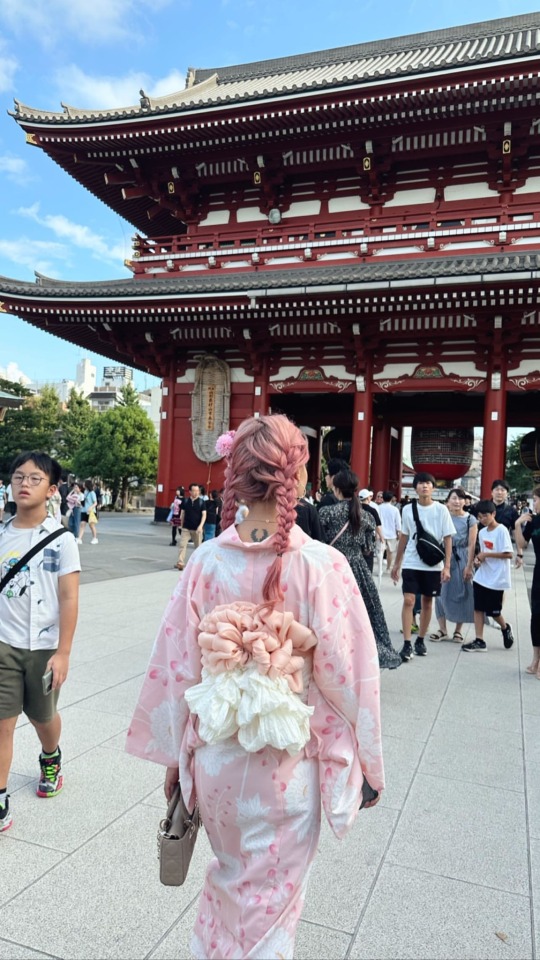

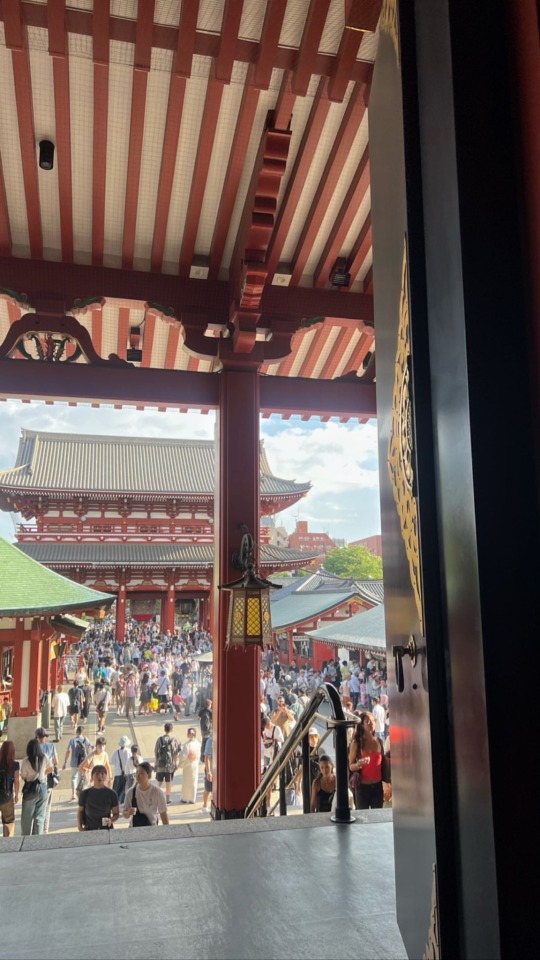
Lily Maymac 🌸💋🍒🌸 Me & my Waifu 🥰 @annpn_ Senso-ji Temple in Asakusa Tokyo Japan 🇯🇵
#lilymaymac#beautiful#sexy#babes#models#instagram models#fashion#selfie#august 2023#japan#tokyo#asakusa#tuesday 15#senso-ji temple#temples#sexy smile#pink hair#pigtials#annpn#traditional dress#kimono#bday girl#vacation#waifu
8 notes
·
View notes
Text
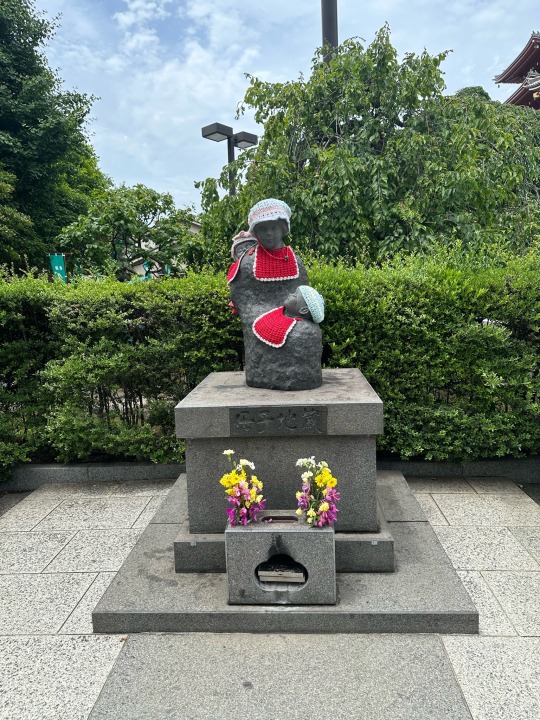

At Senso-ji Temple
I love seeing how people have hand made garments and accessories for the shrines and statues around the temples here. It really shows the love and connection to the culture and history.
2 notes
·
View notes
Photo
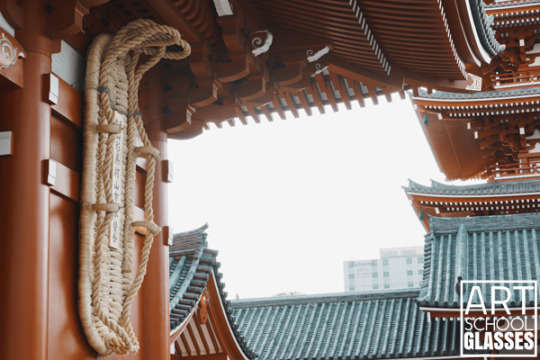
Senso-ji
Asakusa, Tokyo
4 notes
·
View notes
Text
Tokyo - Asakusa: Asakusa Shrine (Senso-ji temple)
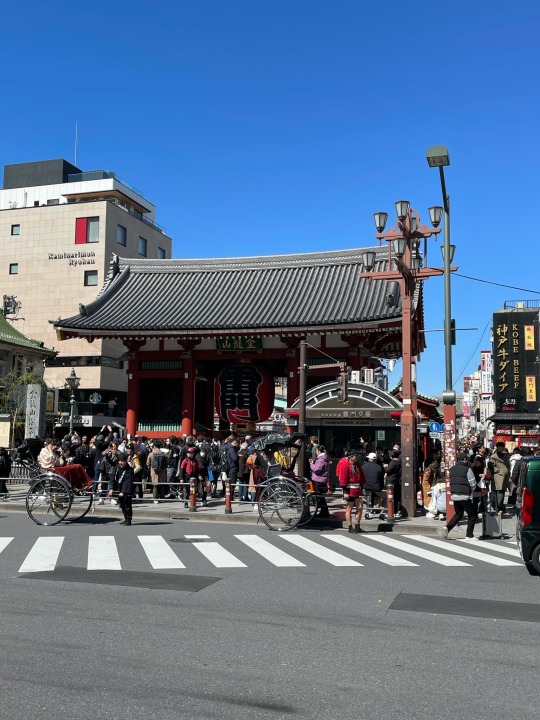
Kaminarimon Gate - far

Kaminarimon Gate - near
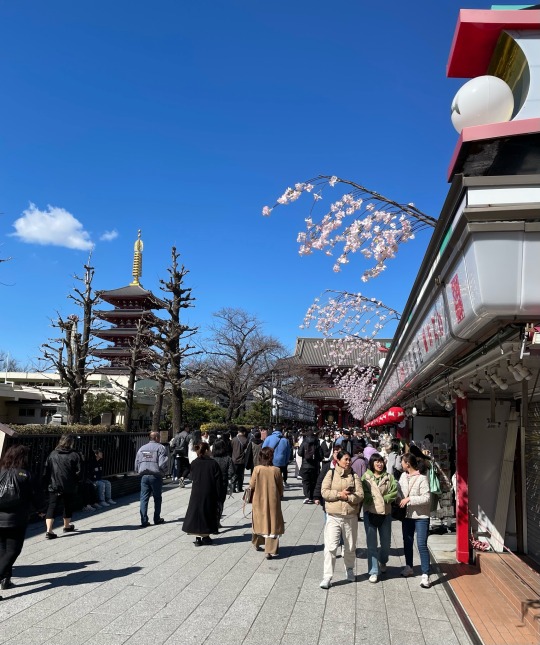
Nakamise-dori Steet
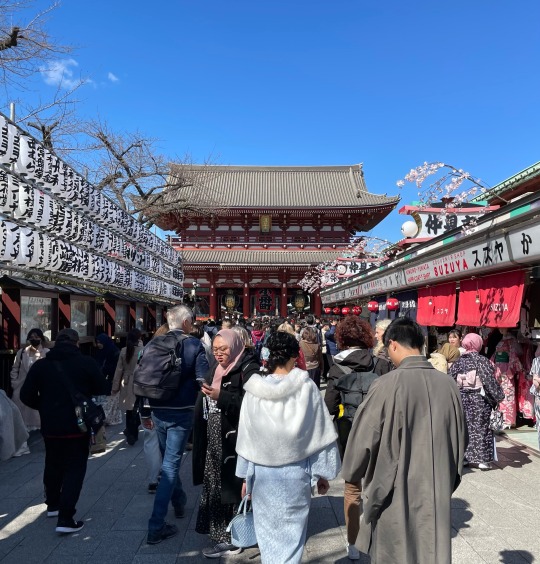
Hozomon Gate

Five-storied Pagoda

Smoking pool (o-koro)
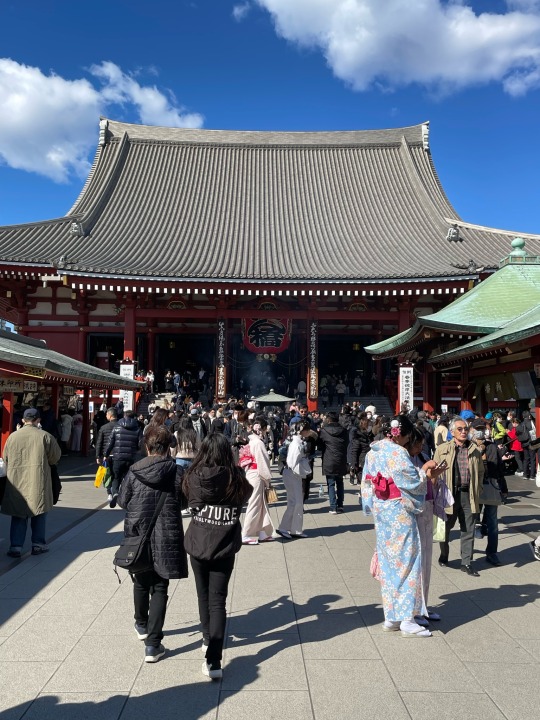
Asakusa Shrine (Senso-ji)

Bells
1 note
·
View note
Photo



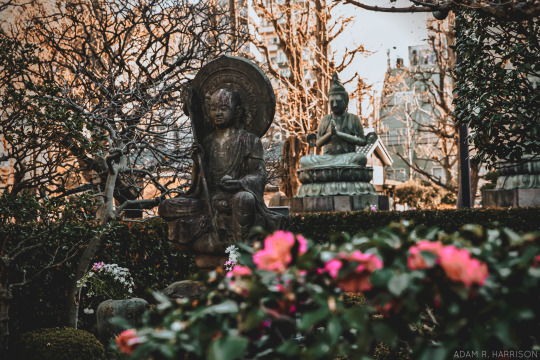
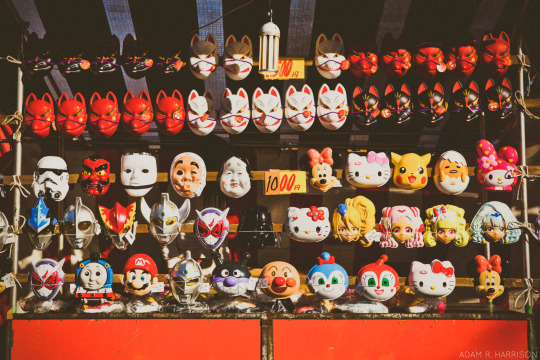
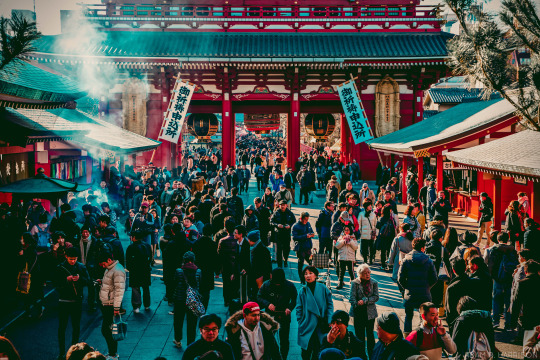
Harri’s Travel Photography // Sensō-ji Temple // Tokyo, Japan // January 2019
https://www.adamrharrison.com
#senso-ji#sensoji#asakusa#asakusa temple#sensoji temple#tokyo#japan#travel tokyo#travel japan#travel#traveling#travel photography#travel pics#travel photos#travel photo blog#temple#Architecture#architecture photography#toronto photographer#photography#photographer#Street Photography
0 notes
Note
With Gojo and Foreign Darling, I imagine he will totally jump in front of you camera, when you want to make photo of sakura tree or smth and mess your photos. Going to drag you into an anime/cat cafes, despite telling him, that even you like anime and cats, this is not my top priority. Totally will pout and whine about you boring and dull plans, those ancient and traditional places and stuff are so boring, lets have fun! This man is unbelievable 😮💨
Japan, a land of culture and excellent food. With temples and shrines and with 14,125 different islands. A trip you have been saving up money for and learning Japanese for for a long time now only to meet a white-haired nuisance who ruins your entire trip.
What you probably want to see:

The cherry blossom tree festival

Mount Fuji

Tokyo Tower

The Senso-Ji Temple

The Fushimi Inari Shrine
vs.
What you instead do with Gojo as your "tour guide":

The Gotokuji Cat Temple

Hello Kitty Land

Monster Ramen Challenge

Visit a cat/pig/owl/hedgehog Café (or all of them)

Play crane games in an arcade
#a talks#yandere thoughts#yandere jujutsu kaisen#yandere jjk#yandere x reader#yandere gojo#yandere gojo satoru
97 notes
·
View notes
Text
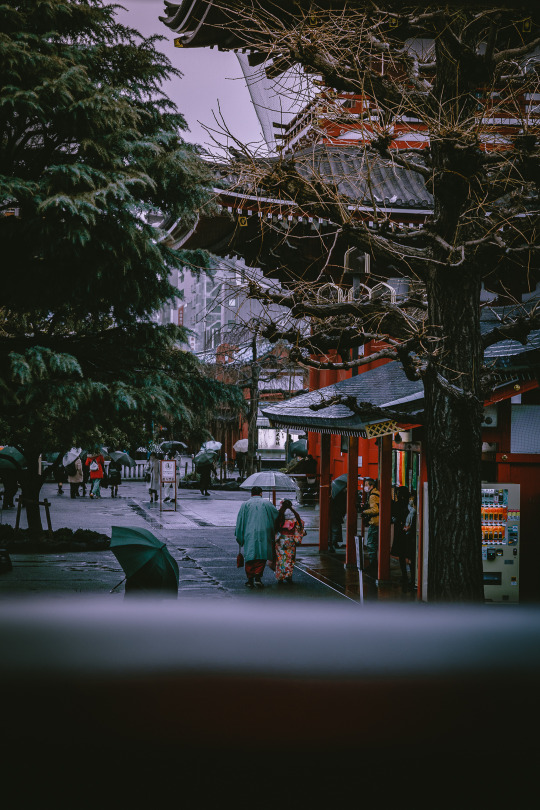
Senso-ji Temple, Tokyo👘☔
東京 浅草寺
#japan#artists on tumblr#lensblr#photographers on tumblr#日本#original photographers#tokyo#東京#street photography
245 notes
·
View notes
Text
fic excerpt: goro and his mother
I keep needing to refer to this one, so here it is. WARNINGS for childhood abuse (poor, poor Mamakechi is not at her best here).
* * *
The summer Goro turns six, his mother packs their few things into plastic laundry bags, and she ties up their futon and quilt with string, and the two of them leave their single room in Shinjuku for a single room some way to the east, in a place called Yoshiwara. Asakusa and the huge red lantern of Senso-ji Temple are nearby to the south, but Goro and his mother don’t live anywhere so rarefied.
The other rooms in the house hold students, casual workers, foreigners. Goro peeps out of their door to talk to them all. Some ignore him, and he ignores them in return. Others are nice—the older boy who lends him manga, the girl who gives him sweets and ties ribbons in his hair, the foreigners whose words he only sometimes understands. And then there’s the old lady who lives on the top floor by herself.
Her name is Migata-san. She has her own kitchen and her own bathroom, when the rest of them have to share, just like in Goro’s old home. She wears a puffy, quilted vest all the time, and sits in front of her TV. Goro doesn’t have a TV any more; in the winter his mother took it away and it never came back. And since the landlord—who is strident and impatient and everything Migata-san is not—shouts at him when he sees him, Goro often finds himself creeping straight upstairs to Migata-san’s tiny apartment.
His mother leaves him there every afternoon anyway. He reads anything he can find, or takes his borrowed manga, or he sits in front of the TV, and Migata-san feeds him riceballs and cake. The TV rotates through daytime dramas, talk shows, adverts and news, but when something good comes on, Migata-san will let him watch it. Fly, Feather Swan! No, Grey Pigeon, I won’t forgive you!
“I could do that,” he tells Migata-san, watching the Feathermen fly about against a painted-looking stormy sky, and she laughs at Goro while he scowls.
“Oh, no,” she tells him, in the stupid grown-up voice. “Those things only happen on television. How about some milk?”
He accepts the milk, still sulking. But he doesn’t drop the idea.
* * *
When his mother finally comes home in the evenings, she’s tired and seems sick; things aren’t like they used to be. Instead of talking to him while she makes soup and rice over a tiny electric ring, she brings frozen boxes from the konbini and puts them in the microwave. They eat side by side in silence, sitting on the rolled futon.
Goro eats his frozen curry steadily, glancing sideways to his mother. She’s picking at her food like she doesn’t want it. “Why are you sad?” he dares to ask, afraid of upsetting her.
His mother doesn’t look at him. “I’m not sad, Goro-chan. Eat your food.”
He looks back to his bowl. The curry is bright orange. He picks some into his mouth: little red chopsticks, with the rubber grip holding them together. It tastes of a lot, but he doesn’t complain, not when she’s sad.
Are we going home soon? He can’t ask her that, either. He tries to think of something to tell her, making his slow way through his curry. Nothing that will make her lonely. Nothing that will make her cry. Nothing that will make her—
“I’m going to be a superhero,” he says brightly.
She glances to him. She looks right into his eyes and she smiles. “Is that what you’ve been doing today?”
“Mm-hm,” he tells her, riveted to that tiny, flickering smile. “Then you won’t have to work all the time, right? I’ll do everything. I’ll look after you and I’ll fight evil”—sharp eyes staring from a soapbox, a face he used to point out on the TV before the TV vanished, a name he still remembers with a child’s fascination—“and I’ll keep you safe for always, and I’ll always win!”
He runs out of breath and laughs, caught up in the brilliant future he’s painting for her, that he more than half believes in. He only remembers the point of it all when she laughs too, leaning back against the wall. “My little hero,” she tells him. And, still as if she’s terribly tired, she reaches for Goro’s blanket—a new, soft, blue blanket, small enough for him to wear around his shoulders, one of the new things that has made its way into their room.
She removes the brooch pinned at her collar, a glittering snowflake left from their old life, and she pins the blanket around his neck, folding the excess down into a collar. One thin hand gentles his hair aside, strokes his face; he presses against her like a kitten, and she lifts his bowl from his suddenly precarious lap.
Goro feels her happiness like his own. “There,” she says, glowing. “Now you have a cape.”
He beams at her. “Is it a bird cape? I want to be a bird superhero. Like Feather Hawk.”
“Ah, that depends,” his mother says, taking his chopsticks and propelling some curry into his mouth. “Can you fly?”
Goro opens his mouth to reply, and she closes it with her free hand; that’s another thing that’s new. He chews dutifully and swallows. “Of course I can fly,” he dictates. “All the Feathermen can fly.”
“Are you sure?” she asks him. “Maybe you aren’t as good as Feather Hawk, hm?” And then she pops another scoop of curry into his mouth, so he can’t even protest, other than through closed lips; she laughs and kisses him on top of his head.
“I am as good as Feather Hawk,” he informs her when he can talk. “I’m better.”
“Of course you are,” she tells him, with another kiss, feeding him the last of his curry. Her own bowl lies half-full beside her. “You’re my little boy. And you’re going to save the world.”
* * *
After that, Goro plays hero a lot. He wraps himself in his blanket cape and shouts Feather Wing Star Formation!, until the landlord knocks on the door. His mother sleeps all morning, while Goro reads the manga she brings him herself now, and she vanishes to work in the afternoon, when Goro goes upstairs to Migata-san; upstairs to wonder where his mother is, why he can’t stay alone in their room when she works any more, like he always did.
One morning, while his mother is dead asleep, Goro finishes his manga and looks around for something else to read, eventually pulling his mother’s glossy magazine from the table. He isn’t supposed to read it, for reasons that to him seem wholly arbitrary, so he’s careful to leaf through the pages as quietly as he can.
The magazine is creased and old-looking like his manga, and full of tiny text, much of which Goro cannot understand. So he guesses the words he doesn’t know: stories about fashion models and clothes and makeup and dragons, although something tells him he’s read “dragons” wrong. The whole thing smells like his mother. At least—it smells like his mother used to smell, like her perfume. These days she just smells of soap and sweat.
She doesn’t send Goro out by himself at night any more, either. That’s probably good, he thinks uncertainly; it was scary to run down the back alleys by himself, scarier to hide behind the bins so the police wouldn’t see him. But he misses the bathhouse. He misses Boss, who'd let Goro sit up front as his assistant, who’d set out piles of coins for him to count and watched him in the bath.
Looking down unhappily, he spies a piece of paper poking out from under the unrolled futon.
Part-curious, and very bored, he gives it a tug. It moves. Another, more careful tug, and the paper is in his hand. It’s a letter in his mother’s writing. A date, on the left—he knows from Migata-san’s TV that it’s yesterday’s—and a name, lots of big kanji, he can’t begin to make them out. But he sees his mother’s name right next to it, Akechi Mari, half of his own name right next to her loopy kana. At the top, there’s something about frost, and then the writing gets much worse—fortunately most of it is still kana.
The letter talks to somebody called Masa-sama. She talks about their room, he thinks, and about her job; she makes them sound bad. We have no money, he reads, over and over. Goro is a beautiful boy. He’s obedient and clever. Any man would be proud to call him his son. He reaches out, with one tentative hand, to touch those words.
The letter has been crumpled into a ball, and then unfolded; he tries to flatten it, with careful strokes of his baby hands. He reads it again, and again, and again. Any man would be proud to call him his son.
He has no idea his mother is awake. Not until a hard hand grabs his shoulder and shakes him, tearing the letter from him. “Give me that!” his mother yells as she hits him, right around his head, hard against his ear with the flat of her hand. Goro screams and falls to the floor, clutching the side of his head, and as he dissolves into tears and confusion he sees his mother crying too, tearing the letter like a typhoon, smaller and smaller and smaller pieces that she throws and screams at and hurls into the bin.
* * *
Before long, Migata-san comes downstairs, and she knocks on the door, and without a word she takes Goro upstairs, still sobbing, while his mother sobs in a heap on their floor. He sits on his usual cushion, still hiccuping sobs, as Migata-san clucks to him and washes his face and hands.
“There we are,” she says, beady eyes like a bird. “How about some hot milk? And a cake?” Goro nods his head yes, not meeting her eye.
He’s clever. You’d be proud of him. Was that letter to his father?
Your father is a monster! he remembers her shouting, back at the old room when he was small. She had hit him then, too.
Why is his mother writing to a monster? When even talking about him makes her so upset she cries and she hits Goro? They must be in terrible trouble. Is that why she’s asking Goro’s father for money?
… has his father got money?
Goro doesn’t realise that he and his mother are poor. But he knows they aren’t rich, that his mother works every day, works so hard she sleeps all the time and has no time for him. He adds it to his picture of his father: a monster, a rich man. A man who’s somewhere else when he should be with Goro and his mother. A man his mother calls Masa-sama, like he’s a king.
And that evening, when he’s finally home, when his mother is in the toilet and not coming out, he sneaks the fragments of paper with his father’s name out of the bin.
86 notes
·
View notes
Text

Sean bienvenidos a una nueva publicación en la cual aclararemos las diferencias entre un templo y un santuario japonés dicho esto pónganse cómodos que empezamos.
-
Seguramente, todos hemos visto alguna vez en fotos templos y santuarios que están por todo el archipiélago nipón y más de una vez nos hemos preguntado: ¿Cuáles son las diferencias entre ellos?
-
Primero la palabra santuario ¿Qué significa?: Es el lugar en el que los japoneses adoran a todos los kamis por lo cual cada uno tiene el suyo propio, también cabe destacar que puede ser una montaña un lago ect.. Cuando buscamos esta palabra en español, hace referencia a un templo,entonces ¿Cuáles son las principales diferencias?
la principal sería que los santuarios sintoístas, disponen de una puerta principal llamada torii
a diferencia de los templos budistas, que disponen de una pagoda.
Ejemplos de templos budistas por ciudades
Templo de Kiyomizu-dera (Kioto)
Templo Kinkakuji (Kioto)
Templo Senso-ji (Tokio)
Templo de Hokokuji (Kamakura)
Templo Todai-ji (Nara)
Templo de Sanjusangendo (Kioto
-
Santuarios japoneses por ciudades:
Santuario de Ise – Ciudad de Ise
Santuario Meiji – Tokio
Santuario Itsukushima – Miyajima
Santuario Sumiyoshi Taisha – Osaka
Santuario Hie Jinja – Tokio
Santuario Izumo – Ciudad de Izumo
-
Para aclarar las dudas, entre un santuario y un templo: También hay que tener en cuenta los distintos nombres y otras de las cosas que caracterizan un templo son las siguientes : Komainu, Temizuya o chōzuya, Salas principales, Amuletos,Komainu, Temizuya el honden y el haiden.
En próximos capítulos podemos hablar de cada uno de ellos, aparte de seguir realizando publicaciones de historia, arqueología, geografía entre otros temas de japón os deseo un cordial saludo.
-
Welcome to a new publication in which we will clarify the differences between a temple and a Japanese sanctuary. That being said, make yourself comfortable and let's get started.
-
Surely, we have all seen temples and sanctuaries that are all over the Japanese archipelago in photos and more than once we have asked ourselves: What are the differences between them?
-
First, the word sanctuary What does it mean?: It is the place where the Japanese worship all the kamis, so each one has their own, it is also worth noting that it can be a mountain, a lake, etc. When we look for this word in Spanish, it refers to a temple, so what are the main differences? The main one would be that Shinto shrines have a main door called torii. unlike Buddhist temples, which have a pagoda. Examples of Buddhist temples by city Kiyomizu-dera Temple (Kyoto) Kinkakuji Temple (Kyoto) Senso-ji Temple (Tokyo) Hokokuji Temple (Kamakura) Todai-ji Temple (Nara) Sanjusangendo Temple (Kyoto) Shitennoji Temple (Osaka) - Japanese shrines by cities: Ise Shrine – Ise City Meiji Shrine – Miyajima Sumiyoshi Taisha Shrine – Osaka Fushimi Inari Shrine – Kyoto Hie Jinja Shrine – Tokyo Izumo Shrine – Izumo City
-
To clarify doubts, between a sanctuary and a temple: We must also take into account the different names and other things that characterize a temple are the following: Komainu, Temizuya or chōzuya, Main rooms, Amulets, Komainu, Temizuya the honden and the haiden. In future chapters we can talk about each of them, apart from continuing to publish publications on history, archaeology, geography, among other topics about Japan, I wish you a cordial greeting.
-
寺院と日本の聖域の違いを明確にする新しい出版物へようこそ。そうは言っても、安心して始めましょう。 - 確かに、私たちは皆、日本列島各地にある寺院や聖域を写真で見たことがあり、それらの違いは何だろうかと自問したことが一度や二度ではありません。 - まず、聖域という言葉はどういう意味ですか?: それは日本人がすべての神を崇拝する場所であり、それぞれに独自の神があり、それが山や湖などであることも注目に値します。この単語はスペイン語で寺院を指しますが、主な違いは何でしょうか? 主なものは、神社には鳥居と呼ばれる表扉があることです。 塔のある仏教寺院とは異なります。 都市別の仏教寺院の例 清水寺(京都) 金閣寺(京都) 浅草寺(東京) 報国寺(鎌倉) 東大寺(奈良) 三十三間堂(京都) 四天王寺(大阪) - 都市別の日本の神社: 伊勢神宮 – 伊勢市 明治神宮 – 東京 厳島神社 – 宮島 住吉大社 – 大阪 伏見稲荷大社 – 京都 日枝神社 – 東京 出雲大社 – 出雲市 - 聖域と寺院の間の疑問を解消するには、次のような名前や寺院を特徴付けるその他のものについても考慮する必要があります: 狛犬、手水舎または手水舎、主室、お守り、狛犬、本殿と拝殿。 今後の章では、歴史、考古学、地理、その他日本に関するトピックに関する出版物の発行を続けることに加えて、それぞれのテーマについてお話します。心からご挨拶を申し上げます。
#清水寺#京都#金閣寺#伊勢神宮#伊勢市#日枝神社#東京#出雲神社#出雲市#寺院#神社#日本#歴史#ユネスコ#Kiyomizuderatemple#Kyoto#KinkakujiTemple#IseShrine#IseCity#HiJinjaShrine#Tokyo#IzumoShrine#IzumoCity#temple#Shrine#japan#history#unesco
26 notes
·
View notes
